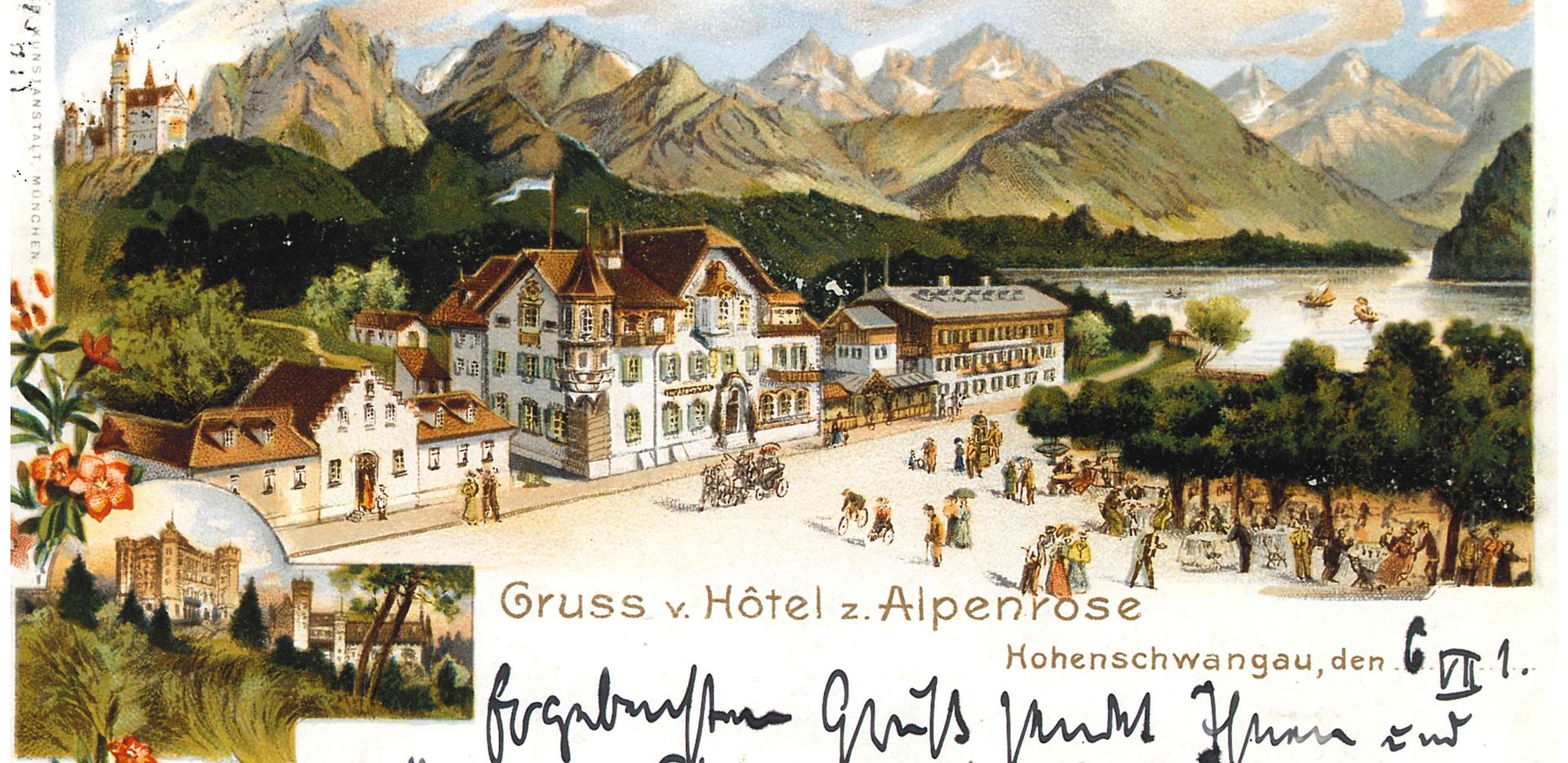A house full of history....
A museum in the village of the royal castles
Nestled below Hohenschwangau Castle, on the shores of the Alpsee and with a view of Neuschwanstein Castle, this was where, long ago, the guests of the royal hunting parties stayed. The former Hotel Alpenrose was reopened in September 2011 as the Museum of the Bavarian Kings, complete with museum café and restaurant. The exhibition recounts the history of the House of Wittelsbach from its beginnings until the present, with a particular focus on the family members who built the palaces Hohenschwangau and Neuschwanstein.
The knights of Schwangau laid the foundation stone of today's Hohenschwangau in the 12th century with their castles. The future King Maximilian II discovered the castle ruins at Hohenschwangau in April 1829. He fell in love not only with the surrounding scenery, whose mountains, forest and lakes are the epitone of Romanticism, but also with the area's history. He bought the ruins and from 1832 converted them into a summer residence for his family. The royal court led to the establishment of the first hotels here; especially when royal hunts were held, there was a need for lodgings in which the predominantly aristocratic guests and their entourages could be suitably accommodated.
Located by the Alpsee, the "Alpenrose" was first mentioned in an official document in 1852. It was established in the "Neues Brauhaus", which had been built here in 1780. When Neuschwanstein Castle was constructed in 1889 in place of the inn on top of the old brewery's cellar vaults, and by 1905 this had been expanded by way of a second, magnificent section with terraces and balconies directly on the shores of the Alpsee. Not least because of its wonderful location, it was to become one of the top addresses in the area.
Acquired by the Bavarian royal family in 1894, the building is now owned by the Wittelsbacher Ausgleichsfonds. Careful attention was paid to issues relating to the protection of listed buildings, when it was converted by Staab Architekten, Berlin and transformed into the Museum of the Bavarian Kings. The centrepiece of the renovation is the triple-vaulted ceiling built to roof over the single-storey connecting wing housing the hotel's former dining hall. The steel construction arches over the central exhibition hall look very delicate; the large panoramic window integrates into the exhibition the same scenery which once captivated Kings Maximilian II and Ludwig II.
Text by Elisabeth von Hagenow






